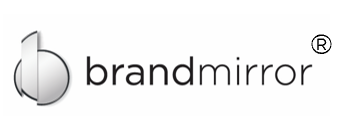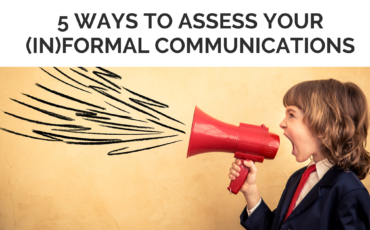In March 2020, everything changed. Businesses had to adapt quickly to a new normal of distance in all things, but particularly in communication. Without in-person meetings, adjustments were made, and virtual solutions were found for some of the most immediate and obvious needs. However, some critical types of communication fell through the cracks, and people and businesses have suffered in a virtual environment. We don’t know how much longer the disruption will last, but it is important to assess whether your day-to-day and emergency communications solutions need adjusting and improving. Brand Mirror is a professional brand consultant resource utilized by business leaders and executives throughout Washington DC. Here are 5 ways we recommend you assess your communication strategy as a business leader and owner. Remember, if you are out of sight, you are out of mind.
- Identifying informal and formal communications in your business.
Every aspect of business has some elements of formal and informal communications. Some formal communications such as weekly emails from leaders, or quarterly reports are monologues where the speaker is conveying important information and there is not always an easy way for creating a conversation. Other formal communications like team meetings, conferences, board meetings, or sales pitches should be more interactive and provide intentional ways for dialogue. Informal communications – conversations over coffee, or at the water cooler – are critical relationship-building tools that make internal and external interactions more effective. For example, with every formal board meeting, there could be a one-to-one pre-board meeting check-in with each board member. Both interactions need to continue. Take some time to consider the many ways that your business communicated informally and formally and ask yourself if any of these are missing in your hybrid/virtual activities.
Remember: People like to feel valued, heard, and engaged. It is important for CEOs, leaders, and managers to ensure they are providing space for engagement in authentic conversations.
- Have a communication strategy.
Once you have an inventory of your business communications pre-COVID, develop a plan to make sure that they are all replicated in some form in a virtual world. Do you have diverse ways to engage that stimulate both formal and informal communications? Have you trained and assisted your team in expectations around new forms of communication? Some people started using some of the virtual tools only recently, do they know how to use them? Have you set “brand” standards such as what Zoom background and camera angle your team should use? Have you invested in virtual tools such as Gravatate, Asana, Monday, or Slack to create real-time engagement? The key to a successful strategy lies in addressing and incorporating the full range of business communications.
Remember: Many companies tend to “over-meeting” their people, now is a good time to reassess what meetings you should keep, stop, start, or change. Ask your team for their input.
- Set goals and standards to measure success.
It is not enough to set up a “water cooler” Slack channel and expect it to have the same function as its namesake. In order to ensure that your virtual alternative to any type of communication is achieving its purpose, identify what you, your team, and the business want and need out of the communication. For example, a weekly leadership email could track opens to make sure that team members are engaging with the topic. A virtual conference could have polls and other evaluation tools to understand the audience’s needs so that you can determine if you are meeting expectations or exceeding them.
Remember: Consider assessing meetings on engagement, productivity, ability to empower others to lead the meetings, rotating ownership across teams to ensure all groups feel relevant and empowered to lead.
- Consider efficiency vs. efficacy.
Not all meetings or agendas have to be the same. While coordinating schedules may lead you to try to keep things brief and to the point, you may be missing out on team engagement. Challenge the status quo. Your goal should be to keep everyone excited and motivated in the virtual space. Do your meetings have a way for the participants to make a meaningful connection? If the participants are all necessary to the meeting, you need to make sure that you have built-in a way for everyone to engage. You should consider getting input from the participants. This can identify potential conflicts, and it allows the participants to have skin in the game. For example, school is starting back up, and parents working from home will be setting their children up in front of their own screens. Getting input on good or bad times for parents to attend meetings will assure that they can both attend and be present during meetings.
Remember: As the face of the business, it is imperative to engage your people. There is still a war on talent. Continue having skip levels, or maybe virtual lunches with new staff. Find ways to engage efficiently and effectively, while also being authentic.
- Treat this like an opportunity.
Changes in communication have been forced on us, but they are not all a matter of temporary, emergency adaptation. Throughout the business world, we are hearing about businesses that are postponing a return to work for months. Some companies are even considering staying virtual. They have discovered that a physical office is not critical to operating. As we assess our communications, we should be considering whether and how to make these recent changes into long-term improvements. This means being willing to experiment – try different tools with an eye towards keeping the ones that work for your business. If you are rotating employees back in the office, maybe you continue to keep certain meetings virtual to ensure engagement across teams.
Remember: Celebrate your wins, change at a pace your people can embrace. Don’t miss the opportunity to create value out of a crisis.
We can’t know what the “new normal” will be, as Seth Godin says, “there is just the normal we face right now.” That said, the current situation requires more than triage since it is going to last a while longer. It may take many changes, and perhaps even assistance from an expert brand consultant in Washington DC. Take the time to look at your communications to make sure you are incorporating the opportunity for both formal and informal interaction. Your assessment will hopefully find ways to improve upon your short and long term business communications.
© 2020 Jennifer Dalton
Jen Dalton is a personal brand specialist with entrepreneurship in her DNA. She helps business owners and executives define how they show up as leaders, make the most of their strengths, and tend to their legacy, growth, and visibility. The author of two books, frequent speaker, podcaster, and “Purpose Sherpa,” Jen is a critical resource for any person or company that wants to define their brand and differentiate themselves in authentic, credible, and relevant ways to the market.

